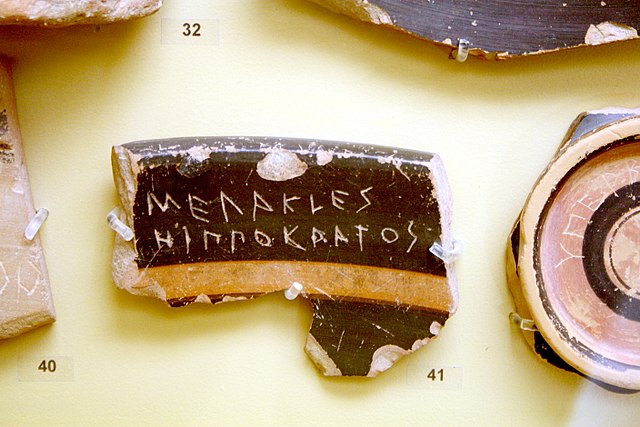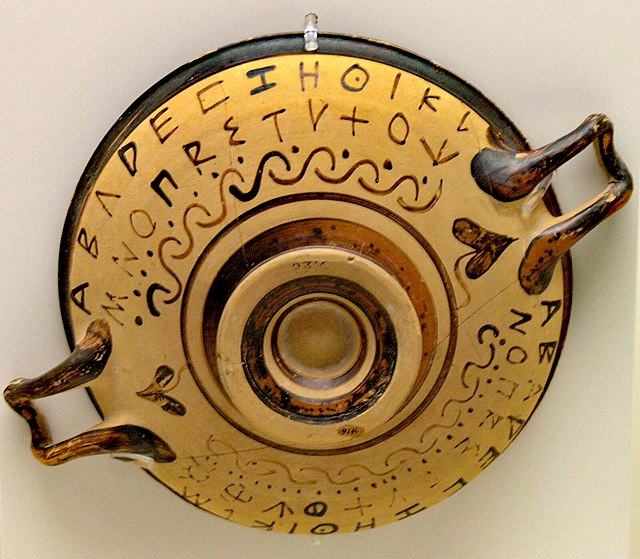Eta is the seventh letter of the Greek alphabet, representing the close front unrounded vowel,. Originally denoting the voiceless glottal fricative,, in most dialects of Ancient Greek, its sound value in the classical Attic dialect was a long open-mid front unrounded vowel,, which was raised to in Hellenistic Greek, a process known as iotacism or itacism.
Eta (heta) in the function of /h/ on the ostrakon of Megacles, son of Hippocrates, 487 BC. Inscription: ΜΕΓΑΚLES HIΠΠΟΚRATOS. On display in the Ancient Agora Museum in Athens, housed in the Stoa of Attalus.
Eta in the function of /h/ on an Attic red-figured calyx-krater, 515 BC. Amongst the depicted figures are Hermes and Hypnos. Inscriptions: ΗΕΡΜΕΣ – ΗΥΠΝΟΣ.
The Greek alphabet has been used to write the Greek language since the late 9th or early 8th century BC. It is derived from the earlier Phoenician alphabet, and was the earliest known alphabetic script to have distinct letters for vowels as well as consonants. In Archaic and early Classical times, the Greek alphabet existed in many local variants, but, by the end of the 4th century BC, the Euclidean alphabet, with 24 letters, ordered from alpha to omega, had become standard and it is this version that is still used for Greek writing today.
Dipylon inscription, one of the oldest known samples of the use of the Greek alphabet, c. 740 BC
Early Greek alphabet on pottery in the National Archaeological Museum of Athens
A 16th-century edition of the New Testament (Gospel of John), printed in a renaissance typeface by Claude Garamond
A page from the Codex Argenteus, a 6th-century Bible manuscript in Gothic






